Category: Cheese Facts
Which Cheese Is Best? Grocery Store, Locally Purchased, Or Purchased Online?
Even though shopping at a grocery store is extremely convenient, who can truly say they enjoy shopping at grocery stores? The one main reason we all shop at them is because they house pretty much everything you need under one roof. Depending on the quality of the grocery store, there are usually 4 counters worth going to- cheese, meat, fish, and cooked meats.
Grocery Store Cheese
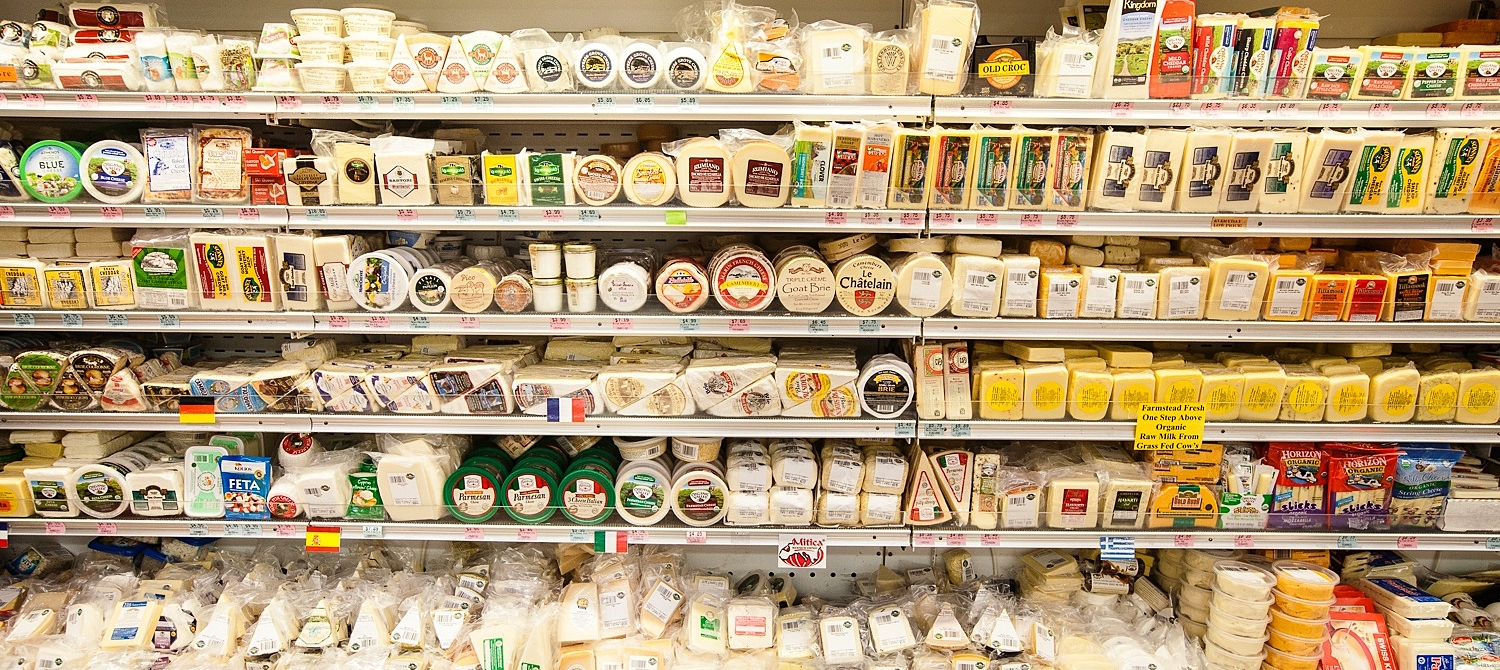
If you are lucky, there may be some cheese which isn’t drowning in vacuum packed, plastic wrap and actually resemble real cheese, not scrunched up chamois leathers that have been left in a water bucket overnight. You may even be able to smell and sample the cheese at the store to make sure you want it!
It all depends on what you expect to pay and what you want from your cheese. Although there are cheap and unpleasant options available, there are some options on the more expensive side that will satisfy your taste buds, you just have to shop around and try to sample some.
It is important to read the labels, it may have a sticker that indicates where it was made, but organic cheeses will have a separate logo to certify that they are organic. Vegetarian and vegan cheeses will also show the correct label. If they do not contain stamps of certification, you cannot trust how the cheese was produced. There will also be information on where the product came from, ingredients used, nutritional information, allergy warnings, use by date and storage instructions all there for our careful consideration.
The choice is entirely down to you when you’re buying cheese off the shelf of a grocery store, but if you are lucky enough to find a knowledgeable cheese counter assistant, don’t be afraid to ask questions.
Locally Purchased Cheese

If you are lucky to have a specialist cheese shop nearby and have never been in, make sure you do and compare the experience and quality with your usual cheese source. Just walking into the store is a whole different experience, it’s as though your senses are reawakened. Farmers markets especially are great places to try before you buy and specialist cheese stores might be willing to let you try the cheese before you buy it. The people who work in these stores are also bursting with the knowledge to help your every cheese need, with a lot more option and variety. They can introduce you to so many cheeses you didn’t even know existed.
If your cheese store is far away, make it an exclusive day out and slow down and enjoy the experience.
Online Cheese Purchasing

Online is a good way of having the best of both worlds. If you have previously visited a cheese store and know exactly what you like, online makes it so you don’t have to go anywhere and you can access the best cheese, no matter what. Shisler’s Cheese House has an online store as well as physical stores to ensure our customers get the best of both worlds. Whether you are looking for a little something for yourself or a gift for a fellow cheese lover, online mail ordered cheese can make the process so much easier and better. With there being thousands of different varieties of cheese, online gives us the chance to access them all, from our very own devices.
Delicious Cheeses of Mexico and The Caribbean
Although the Hispanic cuisine is usually hot and spicy, the cheeses of Mexico and the Caribbean are far from it. The most popular cheeses of the region are the fresh white varieties. They may be quite mild, but they add rich, creamy flavor to the huge number of local recipes available.
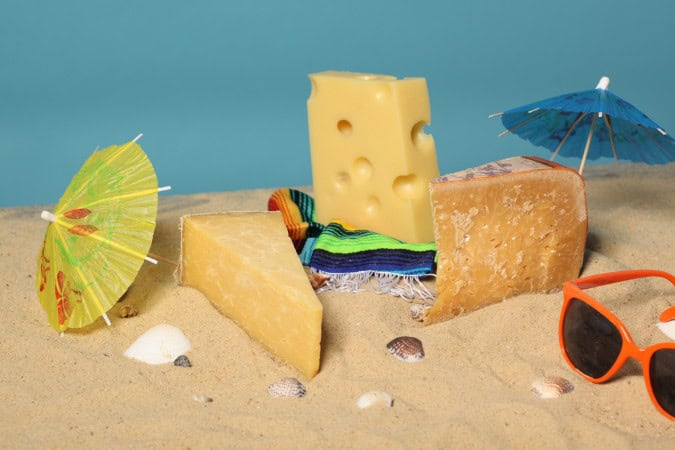
Cheesy Mexican and Caribbean dishes like queso Frito, enchiladas, and chile Rellenos are famous all around the world. It’s almost impossible to imagine that before Spanish colonization, the inhabitants of Mexico lived largely on a diet of fruit and vegetables. The art of cheese making wasn’t even known until the Spaniards brought cows and goats to the area!
Cheese is still being produced in the Mexican state of Chihuahua, from the milk of cattle who originally came from Europe all those years ago. In other famous cheese making areas like Queretaro, Oaxaca, and Chiapas, cheese monger stalls are full with cheeses packed into baskets, wrapped in corn husks or rolled like twine.
The best cheeses from these regions are completely different in every way to Amercian or European cheeses, and they are very worth experiencing:
Chihuahua
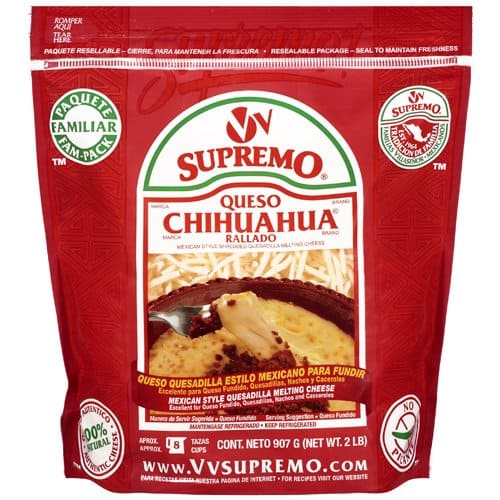
Chihuahua is a pale yellow cow’s milk cheese which can also be named Queso Menonita because of the Mennonite communities of Northern Mexico where it was first produced. The flavor is mild, slightly sour and salty, but actually turns sharp and tangy and very similar to Cheddar, with age. People often use it to make fundido, which is Mexican fondue.
Queso Quesadilla

This smooth, soft cow’s milk cheese has a creamy, milk flavor and a slightly elastic texture. It is a family favorite for snacking on and melting into savory dishes such as quesadillas. A variety of this is called Queso Jalapeno and it has bits of jalapenos mixed into the paste for more spice and zest.
Cotija
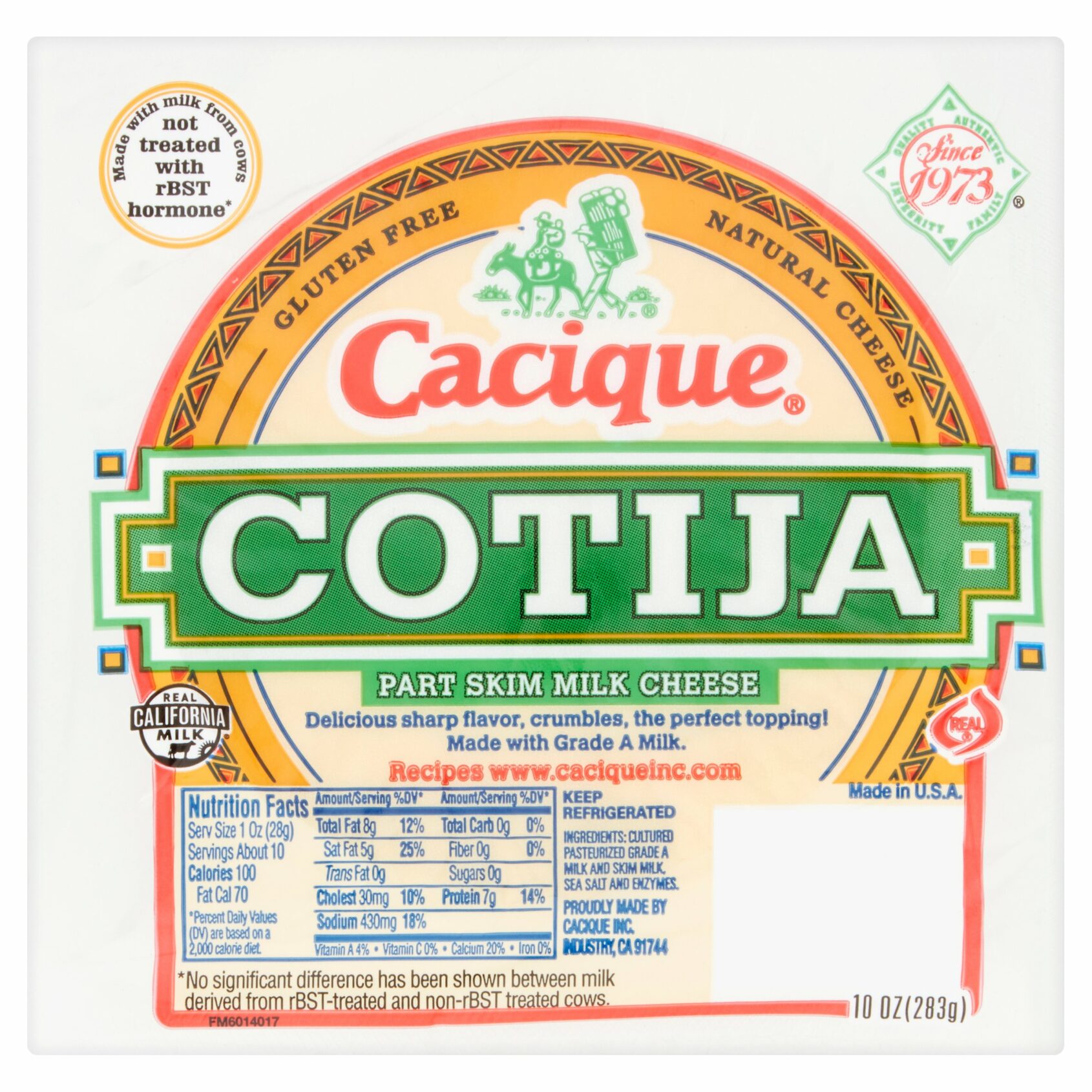
Cotija is sharp, aged cheese that is known as the “Parmesan of Mexico”. It gets its name from the town of Cotija Michoacan where it came from originally. It is made with goat or cow’s milk and has a firm texture and strong flavor with distinctive salty notes. It makes for a good garnish for salads, chili, or pasta.
Queso Media Luna

Also known as Queso De Papa, this Colby-type cheese with its firm, moist texture and orange color has a smooth mild to a tangy flavor. It is a popular cheese in Puerto Rico and is from the Caribbean. Perfect for snacking on or baking with.
Fresh Cheeses

These fresh white cheeses of Mexico and the Caribbean can become warm and soft, without melting when they are heated. They were traditionally crafted by local artisans and delivered to market wrapped in banana leaves.
Queso Oaxaca (Asadero)
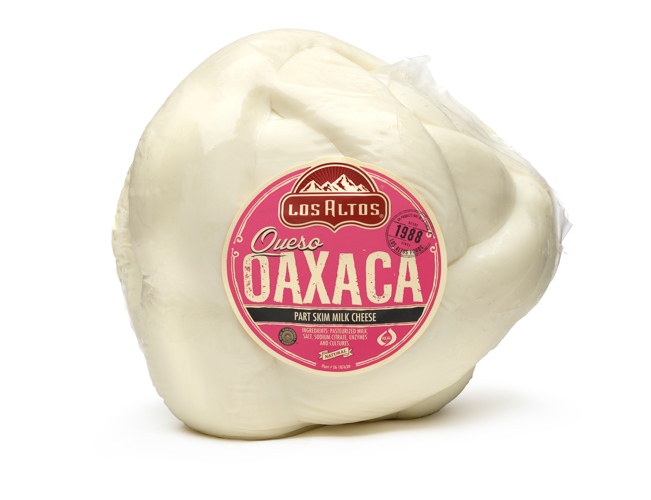
From the Oaxaca region, this famous cow’s milk cheese is a stretched curd variety which is similar in texture to Provolone. It is either white or pale yellow and is kneaded and wound into balls before being plunged into brine for several minutes. This semi-soft cheese has a mild to a buttery and sweet flavor.
Anejo Enchilado

This cheese is firmly pressed and rolled in mild chili powder or paprika to give it a distinctive red coating and slightly piquant flavor. It is made with skimmed cow or goat’s milk, with a hard, dry texture that softens under heat but does not melt. It makes a delicious snack with a tequila or spicy Mexican beer cocktail.
Queso Fresco (Adobera)
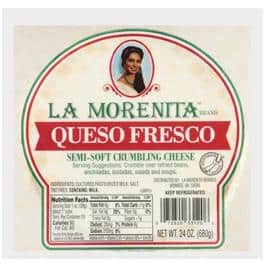
Queso Fresco is the most commonly used Hispanic variety. It is a soft and spongy white cheese which is made from a combination of cow and goat’s milk. The flavor is mild and salty with fresh acidity. Because of its fine-grained texture, the favored use for it is crumbling it over enchiladas and taquitos for added flavor.
Panela (Queso de Canasta)
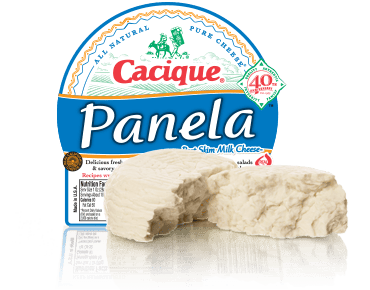
This is the most popular fresh cheese in Mexico. It is white, mild cheese which retains the unique imprint from the basket it is made in. The texture is soft and crumbly, with many different varieties being produced, Panela can be found wrapped in toasted avocado leaves or coated with garlic and chili paste.
Queso Blanco
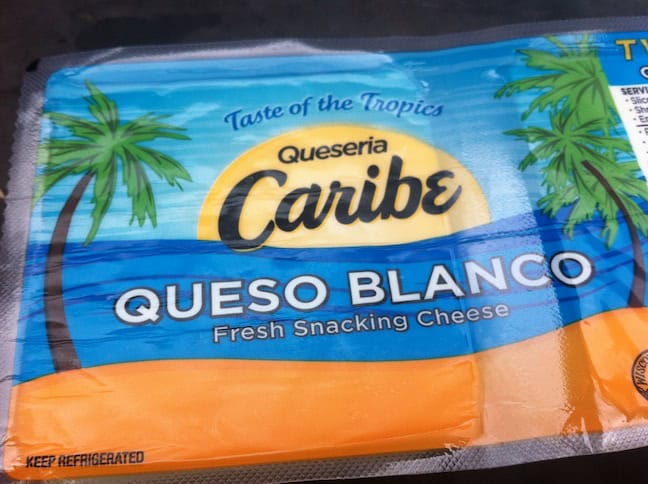
It is traditionally fresh cow’s milk cheese which is flavors cross between Italian Mozzarella and salty cream cheese. The process of creating this cheese is done by Artisans who coagulate the curd with lemon juice, giving it the creamy, but crisp citrus flavor.
Queso Para Freir
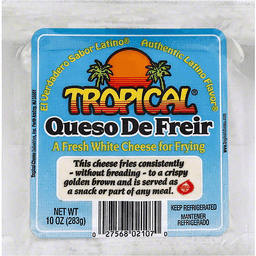
This cheese is popular in the Caribbean and throughout South America. It is a mild, white cheese and a variation of Queso Blanco, but a lot saltier and firmer. Queso Para Freir is great for fried dishes such as the popular Queso Frito because it resists melting.
Common Questions About Cheese
As cheese lovers, it’s easy to know all about the different cheeses available however, there are some simple wonders and questions we are left with regarding things like presentation and storage so here are some quick answers to help all your cheese queries.
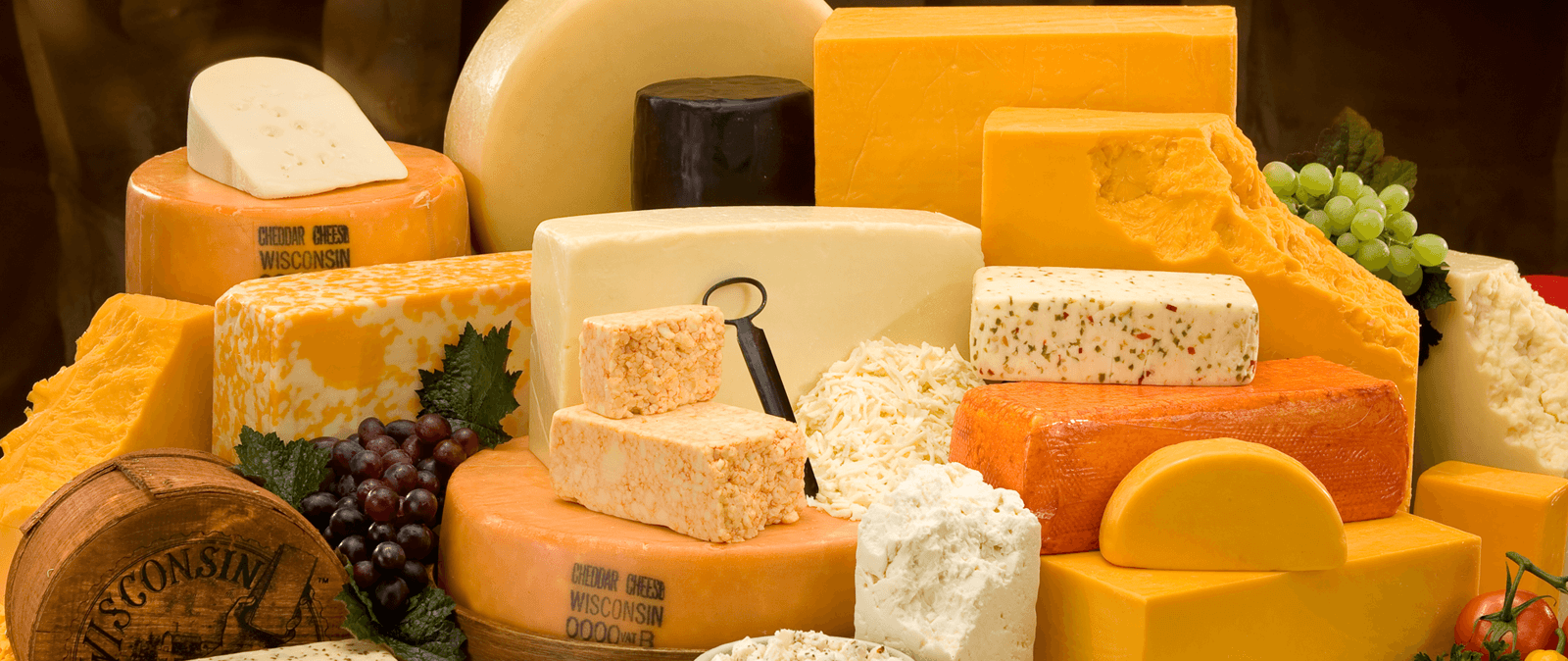
Can You Eat Cheese When You’re On A Diet?
If you enjoy cheese in moderation, it can easily fit into a healthy diet. In fact, cheese is a good source of essential nutrients such as calcium, protein and Vitamin A. These nutrients are important for keeping your skin and eyes healthy, your bones and teeth strong, and your muscles growing. Studies have shown that if you eat a piece of cheese after eating a meal or a sugary snack, it can restore minerals of tooth enamel and protect your teeth against cavities.
Which Cheeses Have The Lowest And Highest Levels of Fat?
Every cheese will come with its own nutritional profile which will be displayed on the label. Labels make it easier for if you are watching your fat intake as you can refer to it for the cheese’s fat facts. However, here are some general guidelines for if you find yourself at a cheese dinner party where there are no labels:
Low-Fat Cheeses: Cheeses like cottage cheese, Quark, Ricotta, and Edam. Also, any cheeses which are labeled with low-fat, reduced-fat, and even fat-free versions of your favorite cheeses are readily available.
Medium Fat Cheeses: These cheeses include Camembert, Brie, Emmental, Edam, Feta, and Mozzarella, as well as a lot of process cheeses and soft goat’s milk cheeses.
High Fat Cheeses: Cheeses such as Cheddar, Cheshire, Caerphilly, Gouda, Gruyere, Parmesan, and Stilton are all high in fat but deliciously addictive!
Why Doesn’t Reduced-Fat Cheese Melt Well?
A lot of reduced-fat cheeses are made with added gums and stabilizers to help stimulate the flavor and texture to make them similar to the full-fat varieties. While these cheeses are great for shredding into salads, snacking on, or topping sandwiches, they do not perform well when heated. The reason for this is because of the lower amount of fat in the cheese. Without a decent amount of fat, the heated cheese won’t melt into a creamy texture, it will instead be turned into a hardened, clumpy, stringy mess. The best way to avoid that is to just use a full-fat variety for melting, because a little does go a long way, so it shouldn’t be too bad for you.
How Long Should You Keep Cheese?
No matter how well you store your cheese, it will still continue to ripen in your refrigerator. This is why it is especially important to consume soft cheeses soon after you have purchased them. Once you open soft cheeses, they will only keep for around one to two weeks.
On the other hand, harder cheeses tend to remain fresher for longer. Blue cheeses will keep for one to four weeks, cheddars and swiss cheeses will keep for several weeks, and hard cheeses are usually good to eat for several months.
Also, large pieces of cheese keep a lot longer than shredded cheese, which is why labels usually state to consume shortly after opening the packet.
What Is Processed Cheese?
It was first invented in 1911 by Switzerland’s Walter Gerber. Then, in 1916, James L. Kraft applied for his method for his processed cheese to be patented. A lot of processed cheeses today are sold in individually wrapped sandwich slices, which are great for melting into burgers, but definitely not for serving with fine wine!
Processed cheeses usually consist of a blend of fresh and aged cheeses combined with some preservatives, coloring, and emulsifiers to make them smooth and ease melting. They are then pasteurized to stop the ripening process which ultimately gives the cheese a longer shelf life. This does come at some sacrifice though because processed cheese definitely lacks the distinctive flavor and texture that natural cheese has.
Is It Best To Serve Cheese Chilled Or At Room Temperature?
It is usual that you will serve cream cheeses like Ricotta, Boursin and Quark chilled, however all the other variety of cheese are best enjoyed at room temperature. Room temperature is when cheese is at its best level of flavor, texture, and aroma. If you eat cheese too cold, you are basically missing out, so just remove cheese from the refrigerator 30 minutes before serving and enjoy!
Can You Freeze Cheese?
It is fine to freeze cheese, it can be frozen to make it last a lot longer. You do however have to understand that cheese which is frozen will go through some textural changes. Softer cheeses may separate, and harder cheeses may become crumbly. However, if you are going to use the frozen cheese in cooked dishes, you probably won’t notice any difference.
A quick tip to freezing cheese is to double wrap it and only keep it in the freezer for up to six months. When you are ready to take it out the freezer, thaw it in the refrigerator and use the cheese within a few days.
Serving Port With Cheese
Cheese is the perfect course of a special meal and a delicious snack at any other time. It can be paired with so much different, complimenting food and drinks, what made port a good cheese pairing?

Facts About Port
The name “Port” comes from its place of origin, Oporto, in Portugal. The Methuen Treaties of 1703 made it so Portugal was in the Grand Alliance in the war of the Spanish Succession. In return for allowing English cloth free access to the Portuguese markets, Portuguese wines had to be cheaper than French wines to make sure the constant supply of wine was quality wine.
No other country are allowed to call their fortified wines port because the vineyards in Douro Valley are the only place where the grapes for port are grown.
The best temperature to serve port is 55-65F, although, white port is usually served chills and tawny port can be served at cooler temperatures as well.
There are many different kinds of port, around 9 styles, so, which port is best to serve with our favorite cheese?
Port
The finest ports are vintage. The first vintage ports were declared in 1734 and it is still an ongoing term used on the port which is produced in years when grape production is described as ‘exceptional’. LBV is an abbreviation of Late Bottled Vintage and is filtered and bottled vintage port.
Unfiltered ports are called ‘crusted’, they need careful decanting to get rid of any sediment before they are served.
White port is a lot newer than other styles of ports, first produced in 1934 and the dry type is popular as an aperitif.
The Traditions of Serving Port
The British Naval tradition of serving port was that it should literally be served from ‘port to port’ at the end of dinner. Another well known port-passing ceremony is within the armed force and went as follows:
-The port is placed in front of the host.
– The host serves guests to the right.
– The host then passes port to guest on the left.
– The remaining guests then pour their own port and pass it to their left until it is returned to the host.
This is the accepted way to serve port during formal dinners and it is thought that if you were to ask for the port to be passed to you, you’re considered to show a lack of social standing.
Which Cheese Is Best To Serve With Port?
The cheese which is most popular with port is commonly Stilton.
Stilton is salty, creamy and acidic whereas Port is a heavy, sweet fortified wine. This makes for a good pairing because the flavors and textures compliment each other greatly and both have been available for hundreds of years.
A lot of good blue cheeses also have the strength to challenge the dominant flavors of port so that neither of them overpowers one another. So if you are not a fan of Stilton, most blue cheeses are a good option, the best thing to do is visit your local cheese store such as Shisler’s Cheese House and ask for recommendations.
An even more bizarre thing to do with port and cheese is serving white port with cream cheese! You wouldn’t think of that, would you? The best thing to do is explore with flavors because that is where it ultimately all begins and is how experts are still creating new cheeses to this day!
Exploring Asian Cheeses
It is commonly assumed that cheese is popular all over the world, but that is not the case. It may be hard to imagine the world without cheese, but in many Asian countries, cheese is not a food with much cultural or culinary significance.

For example, in China, milk, and dairy products have been historically rare. The biggest reason behind this is the high rate of lactose intolerance, along with other reasons such as poor climate, and storage and transportation issues.
In this modern day, however, the technological advancements are changing times in Asia, enabling the cheese market to grow. One day, there might be a whole range of delicious cheeses available throughout Asia, but for now, let’s explore some varieties from current and notable Asian cheese-producing countries. These countries include the Philippines and India, and whether it is made from yak’s milk, blended with confections or enjoyed fresh, the cheese in Asia may be little, but they are unique nonetheless.
Philippines
Kesong Puti:
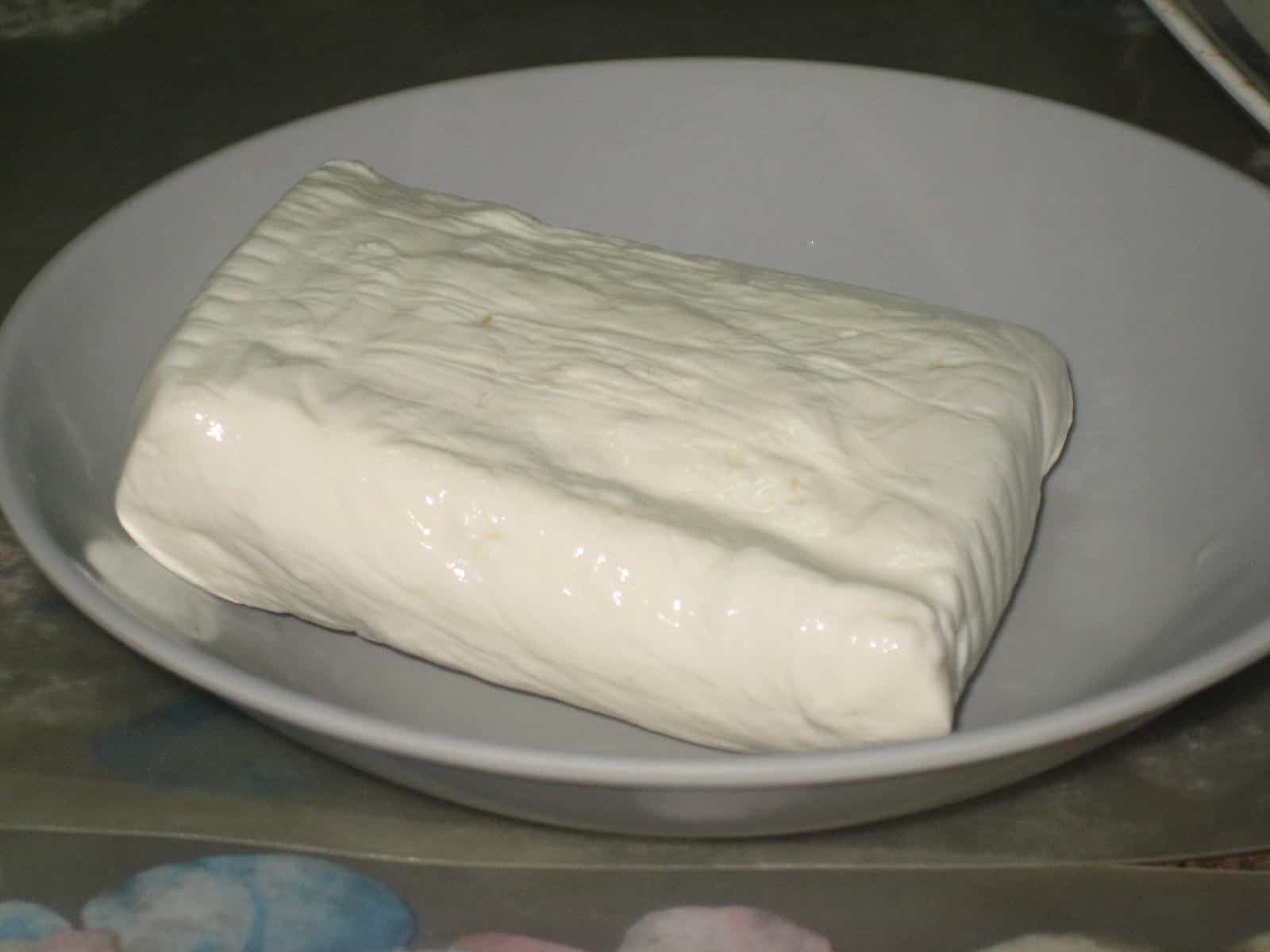
This cheese is also known as Filipino cottage cheese. It is a fresh cheese which is made from rennet, salt and unskimmed milk of carabao, which is a species of Southeast Asian water buffalo. Kesong Puti is a soft cheese which is white colored with salty, but sometimes sour flavors. Its origin is in the provinces of Laguna, Samar, Bulacan, Cebu and it remains fairly popular in those areas as a breakfast food. Common pairings with this cheese are a freshly baked piece of local bread called “pan de sal”.
India
Bandel (Bandal):
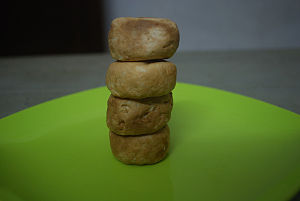
Bandel is a soft, unripened salted cheese which gets its name from the place it originates- Bandel. This cheese is made out of cow’s milk, and they use lemon juice to separate the curds from the whey. It is then shaped and drained into baskets and smoked. Bandel is sold in circular flats immediately after production and is fresh and aromatic because of that.
Paneer (Panir):
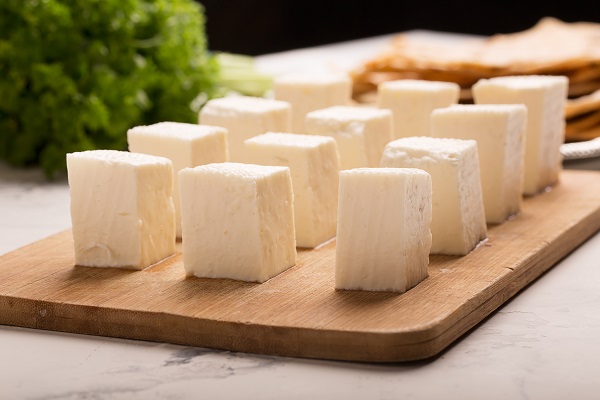
Perhaps the most well known of all the Asian cheese, this traditional cheese is semi-soft and made from cow’s milk. Traditionally used in Indian cuisine, the process of making Paneer does not involve rennet because cows are sacred to Hindus. It is also unaged, acid-set and is completely vegetarian. A lot of curry dishes include Paneer or it is wrapped in dough and fried for snacks because it is high in protein. The cheese is similar in texture to ricotta or tofu and acts as a perfect meat substitute for vegetarians.
Nepal and Tibet
Chhena (Chhana):

Commonly found in Nepal, Bangladesh, Chhena is a unripened, fresh curd cheese made from either water buffalo milk or cows milk. The process of crafting Chhena is similar to that of Italian ricotta, where the cheese is acid-coagulated. It is often used as a dessert cheese because it is very soft and smooth. Sweet desserts such as resgulla and semolina commonly include Chhena as an ingredient.
Tibet:
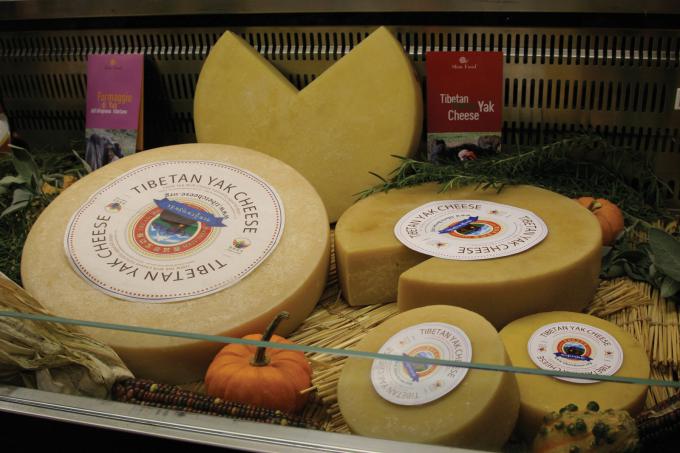
Tibet is crafted from yak’s milk. It is semi-hard and gets its name from the plateau region of Central Asia where it is made. The cheese is molded, pressed and dried in natural sun and wind. The taste is extremely strong.
Ragya Yak:

This unique cheese is crafted in Nepal by Tibetan nomads. It is an aged dri’s milk (female yak) cheese which is firm and slightly granular. The color is greenish-yellow and can be mild to medium in strength with flavors similar to goat’s milk Ibores cheese from Spain. There is only one time period of the year this cheese is made- from the end of June to early September. The aroma is mild and nutty with the rind offering just a hint of spice.
Japan
Sakura:
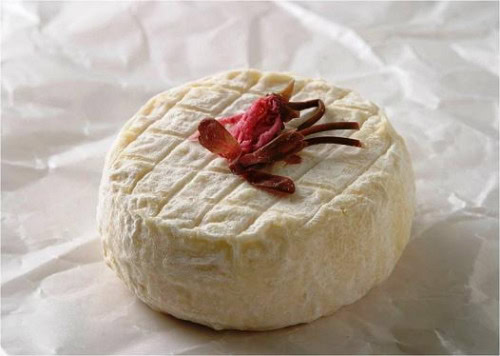
This soft cheese is produced on the island of Hokkaido and is the first widely acclaimed variety from the Asian country of Japan. It is so popular that it even won a gold medal at the Mountain Cheese Olympics in Switzerland. Sakura is creamy white with flavors of mountain cherry leaves, which is also where it gets its name from because Sakura translates from “cherry blossom” in Japenese.
All About Organic Cheeses- Are They Better For You?
If you are a cheese lover, it is already hard enough to choose between your favorite Mozzarella, Stilton or Cheddar. Not only that but in recent years, creameries have created another delicious choice for us: Organic.
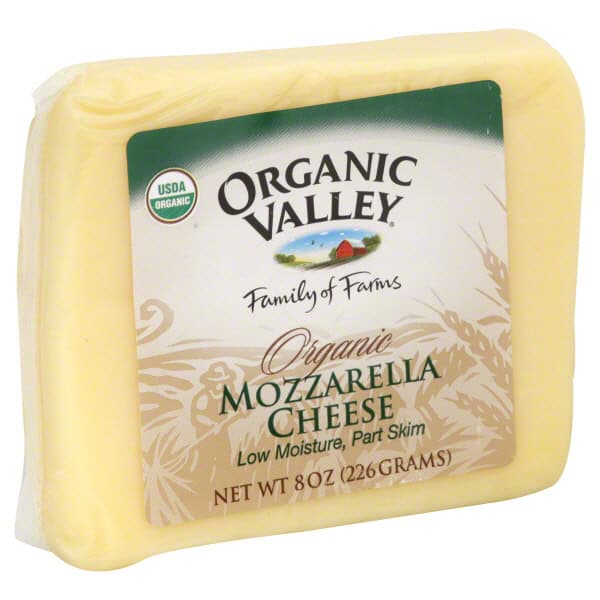
Image Source: gianteagle.com/93966253702.aspx
Organic cheese is very much like many other organic agricultural products on the market, organic cheese is produced without the use of antibiotics, growth hormones, or dangerous pesticides. The milk used to produce the organic cheese comes from all organic farms where cows only eat organically grown grasses. The cheese is also free from artificial coloring or flavorings, and a lot of the time, enzyme rennet, which is used to curdle the milk, is not made from animals or genetically engineered. In place of them are naturally occurring enzymes, making organic cheese not only delicious but safe for vegetarians too.
Why You Should Buy Organic
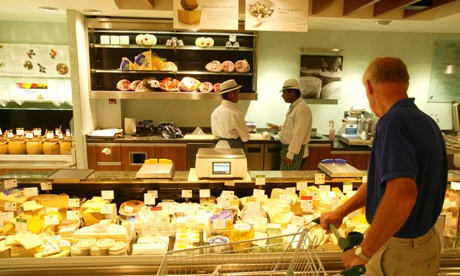
Image Source: pinterest.com/pin/548946642051275268/
It is always the case that when you buy food, it is important to find something that tastes good, and is generally good for you. The good thing about organic cheese is that they are often superior in taste and quality and have received many rewards from cheese connoisseurs and professional critics.
While organic cheese is great for your taste buds, the benefits of buying it stretch farther than just your body. Buying it positively affects everything from your personal health to farm animal welfare, to even the earth’s endangered environment. To put it all into perspective:
Organic Cheese Affects On Your Health
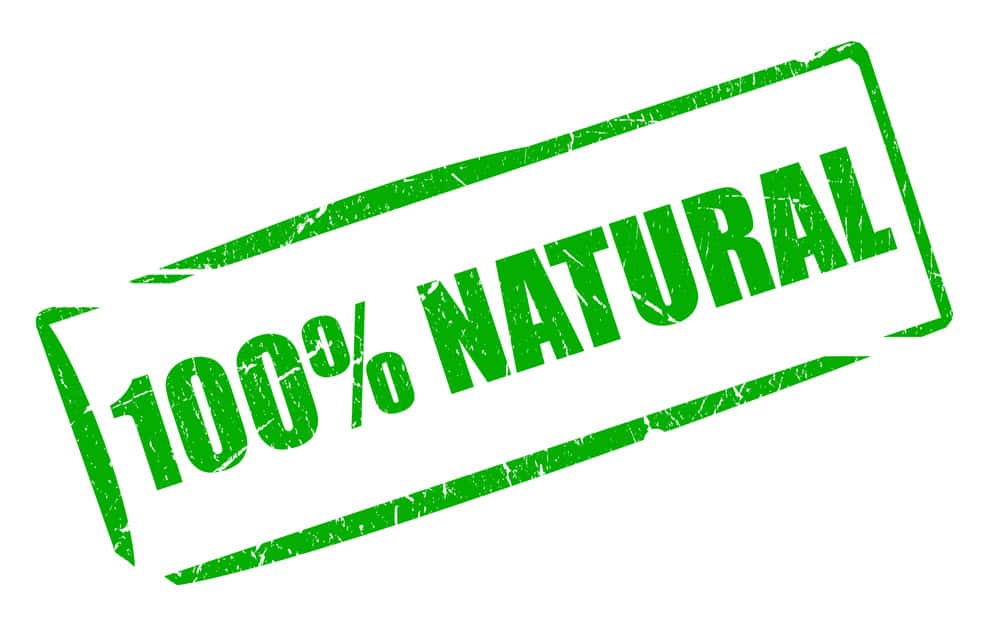
Organic cheese contains all the goodness from regular cheese, including the high levels of protein and calcium. However, research has proven that due to cows having a natural pasture-fed diet, cheese made from organic milk is much higher in nutritional value.
– Research has shown that there are more Antioxidants in organic cheese, with it being 2-3 times higher in antioxidants such as lutein. It is also proven that organic milk is up to 50% higher in vitamin E and 75% higher in beta-carotene. They all fight damaging free radicals and can perhaps aid the prevention of cancer and heart disease.
– Studies have shown that there are more Omega-3s, containing up to 71% more than non-organic milk. Omega-3s are vital for maintaining a healthy heart, strong bones and teeth and flexible joints.
– Organic cheeses also lower the exposure to the toxins and pesticides that often come from factory farming practices. This is very important for children in particular because their rapidly growing nervous systems are more sensitive to the effects of these harmful compounds.
The Welfare Of Animals

Image Source: renewingallthings.com
Another great thing about organic farming is that organic dairy farmers are also committed to the humane treatment of farm animals. Cows are not pumped with protein or antibiotics to force them into producing more than their natural capacities. They are kept in good health, fed an organic diet and have access to fresh air, natural light, and open pasture as much as possible.
Also, another important part of organic farming is that if the cows become sick, they are treated holistically with homeopathic medicines whereas, at non-organic farms, cows are routinely given antibiotics to prevent infection, even when they are healthy. While antibiotics are useful for fighting disease, they become less effective when used excessively. This has an onset effect for humans as we are being exposed to the antibiotics and they may lose effectiveness in treating humans too.
The Effects On The Environment
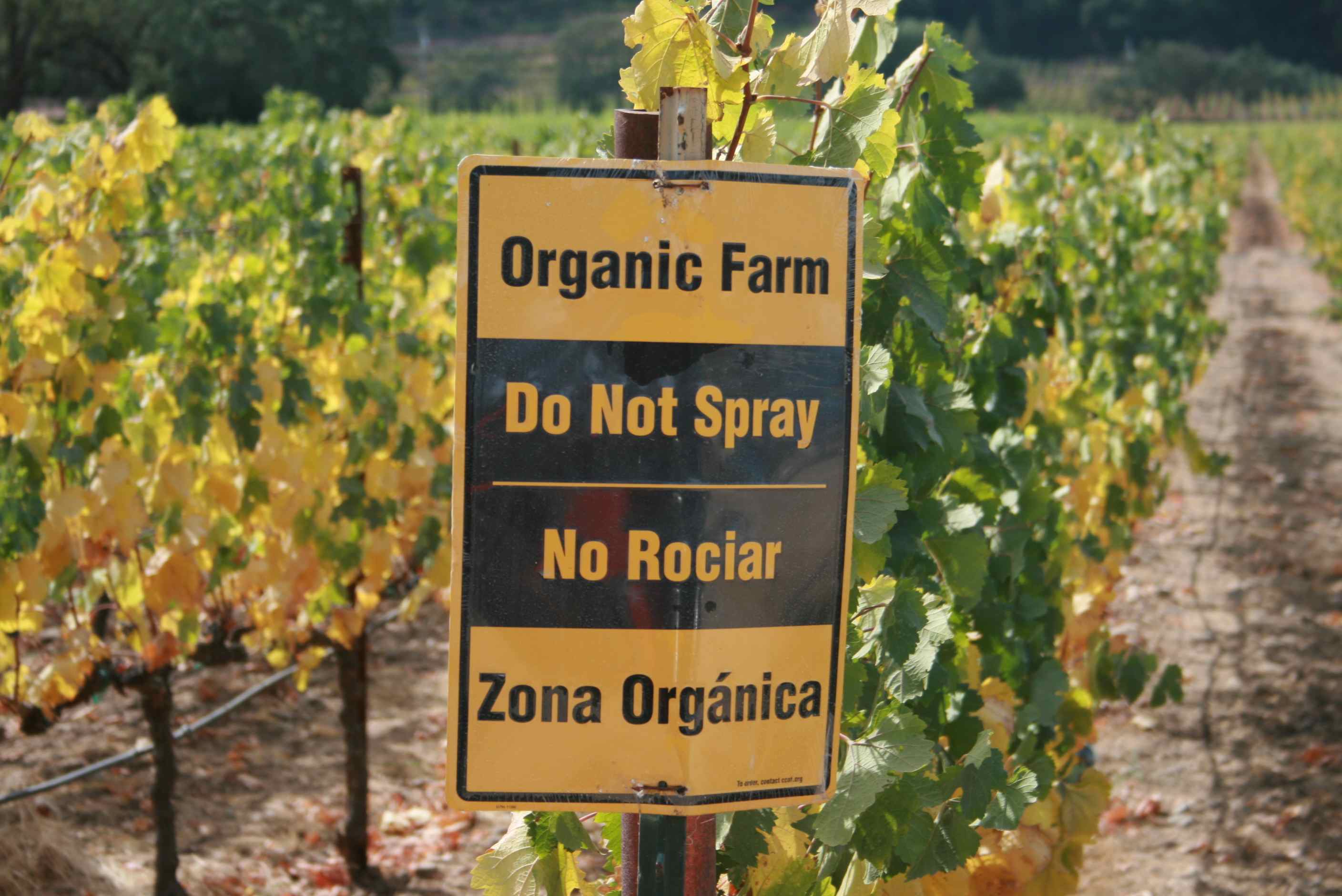
Image Source: therealwinerepublic.com/
You wouldn’t think that organic farming would have an effect on the environment, but it actually does. Organic farmers are not permitted to use chemicals that pollute the air, water or food. Instead, organic farmers use non-toxic pest control methods and sustainable farming techniques like crop rotation and composting. These methods ensure rich, healthy soils while conserving water and fossil fuels. They also are encouraging to wildlife, which has drastically declined over the last 50 years.
How To Know If It’s Organic

Image Source: ota.com/organic-101/organic-standards
Labeling is definitely important when cheese buyers are seeking higher nutritional value, toxin free and humane farming practices. In the U.S. it is the law to have certified organic labeling. There are numerous standards which are enforced by organic certification authorities. If you are in doubt, it is best to check your cheese packaging for organic accreditation. When cheese is labeled organic, it must contain at least 95% organically produced raw or processed agricultural products. Labels will usually contain the standard USDA certification.
The Perfect Cheese Board
When creating and serving cheese boards, nations always tend to serve them differently. For instance, here in America we actually serve cheese boards as a starter whereas in France they serve them right before dessert, and in England, they serve them as the finale (save the best ’til last, right?) The fact is, regardless of when we serve cheese boards, they are a deliciously welcomed indulgence, especially in the finer restaurants and at dinner parties.

Image Source: anappealingplan.com
When it comes to cheese boards, it can vary what you put on them, they can be as simple or as extravagant as you please. However, when it comes to preparing and presenting your cheese board, it can be tricky as they tend to be like a work of art. So here is a perfect guide to help you select and display the best cheese board to be enjoyed to the fullest. Crack open a bottle of wine and indulge in your favorite cheese as you plan your next cheese board.
Selecting What Goes On Your Cheese Board
When it comes to preparing your board, it is best to serve around 4-5 cheeses, this will ensure a good selection while not overwhelming your palate at the same time. Visiting a good cheese store (such as Shisler’s Cheese House!) will ensure variety and good quality cheese. A great tip when you are selecting your cheese would be to aim for different tastes, styles, and textures.
A sample of an interesting but relatively simple cheese board would be:
– A firm cheese such as Asiago or Cheddar
– A soft cheese such as Brie or Camembert
– A blue vein cheese such as Danish Blue Cheese
If you want to go further with your selections, you should add a spreadable cheese such as fresh chevre, or an extra special cheese which is flavored with wine, herbs or spices.
Keep It Themed!
To make your board even more creative, it is great to build around a theme. An idea could be to offer only cheese from different kinds of milk- cow, sheep, or goat’s milk. Another theme could be to offer cheese from a particular country or region a.k.a all American cheeses or Italian cheeses only. Keeping themes will ensure fun and variety. You could even pair the cheese board with a selection of wines from the chosen region as well.
How To Present Your Cheese Board
Now is the important part. You could have the most delicious cheeses possible, but if they are not presented in a way that gets mouths watering, it can be a waste. The best way to begin is by choosing a tray or platter which is large enough to keep cheeses of different shapes and sizes from touching. The type of board can also vary, wood boards are traditional, whereas marble is slightly more elegant and they offer a cool surface and a nicely colored background which will contrast well to make your cheeses pop even more.
Arranging your cheeses is important for making sure they are most accessible to your guests. Put the smaller cheeses in the middle, and then place the soft cheeses around them. The hard cheeses should then be arranged on the outside of the cheese board so that they are easier to cut.
Accompaniments On Your Cheese Board
It is important to garnish your piece of art with natural ingredients. Grapes, apples, parsley, celery, tomatoes and dried berries all are natural and add beautiful colors and flavorings to the board and the perfect contrast and compliments. You might also wish to add olives, onions or lightly roasted nuts in separate dishes. To balance it all out, it is best to add a variety of crackers and bread that aren’t too strong or salty. While you want to keep it simple, that doesn’t mean you cannot treat your guests to something special. Adding slices of tangy sourdough or black pepper biscuits will definitely keep it special.
For beverages, wine, beer, and cocktails are all the popular, classic accompaniments. Put simple, blue cheeses pair well with Sauternes and Port, fresh cheeses pair well with Pinot Noir or Sauvignon Blanc, and aged cheeses with Zinfandel or Burgundy. For more of the extravagant soiree, perhaps offer a different wine for each cheese. Again, tying it back into themes, the best way is to choose a wine from the same region of the cheese.
Tips On Serving
– Serve each cheese with its own knife to avoid mixing flavors.
– Remove wrapping from cheeses, but leave on rinds.
– Serve cheeses at room temperature for optimal flavor. To do this, take cheeses out of the refrigerator up to 2 hours before serving.
After The Dinner Party
With any leftover cheeses, you should discard any leftover soft cheese, but unused hard cheeses can be re-wrapped and replaced in the refrigerator for your next cheese board. If your leftover cheese happens to be too small or too odd in shape for another cheese board, you can simply melt it, shred it or bake it into a delicious cheese recipe.
The Probiotics In Raw Milk Cheese Are Proven Very Beneficial
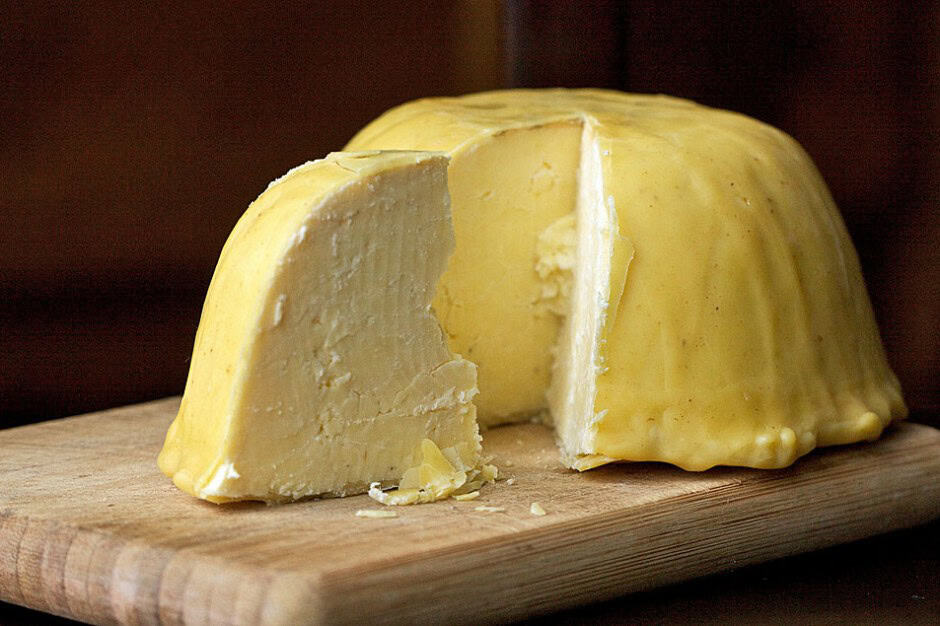
Image Source: barfblog.com/tags/raw-milk-cheese/
Despite the controversy, raw milk cheese just may be the perfect food. It offers pretty much all the nutrition you need, with full distribution of amino acids, balanced calories and a huge amount of probiotics which are so good for your body.
The word ‘probiotics’ itself actually means “for life”, which means we cannot sustain our lives without these vital allies. They are an extremely beneficial bacteria that we all have and need for our bowels and intestinal tracts to function smoothly, and so much more. It is said that raw milk cheeses have a wider diversity of bacteria, yeasts, and molds, which ultimately contribute to a healthy gut.
Raw milk cheese is not only good for us but it tastes incredibly delicious, with its richness and complexity of flavors. The best cheese starts with high-quality milk. To achieve this, it must come from healthy cows that feed on lush grass. When it comes to raw milk cheeses, the milk is superlative because the animals have been grazing on pasture.
Even though pasteurization heat-treats milk, which kills pathogens such as Listeria and E. Coli, Laws still stipulate that raw milk cheese in the U.S. must be aged for a minimum of 60 days, regardless of if it is produced domestically or imported from abroad.
The Power Of Probiotics

Image Source: chinesemedicinedoc.com/probiotics-strains-are-important/
Probiotics are proven to play an important role in maintaining healthy digestion and supporting a strong immune system. With the overuse of antibiotics, children often have compromised microbiomes and probiotics may be the key to restoring the healthy gut.
There are also studies that show that pregnant women who enjoy farmstead milk and cheese products throughout their term have children with fewer allergies, asthma and wheezing than those who do not enjoy these foods. Probiotics may also help decrease stress, prevent obesity and regulate weight. There are also studies that suggest that they also protect against respiratory infections.
So, with all these advantages to probiotics and raw milk cheese containing many, it is important to eat it, despite the controversy of raw milk cheese being bad for you. Raw milk cheese is also extremely delicious, so that alone is a plus.
The Wonderfully, Unique Cheeses Available At Shisler’s Cheese House!
Our fantastic Cheese House originally opened in 1958. Since then, we have come a long way and perfected our cheese to a high standard. The 2 main goals of our Cheese House have always been to provide wonderful local cheeses and gourmet foods to everyone, along with exceptional and friendly customer service.

We are currently owned and operated by the third generation of Shislers. We have 2 locations, the original being in Orrville, OH and the second being in Copley, OH. Because of our dedication of cheese and gourmet foods, we ship all throughout the United States and to over 30 different countries!
We have a wide selection of cheese, to your staple cheeses such as American Cheese and Swiss, to our more specialized, unique blends which we would love for you to try!
Here are some of our specialty cheeses:
Hot Pepper Cheese

Want to spice up your cheese plates? We have just the right cheese for the job! Our Hot Pepper Cheese has just the right amount of heat to make a perfect balance of flavor with a little extra kick! You have to try it to believe it!
Green Onion Cheese
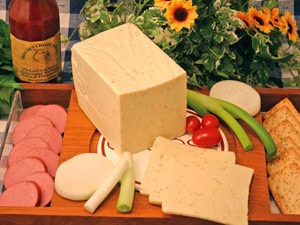
We love to support local businesses and that doesn’t change when it comes to our cheese! Our Green Onion Cheese is made with all-natural 100% Ohio farm milk and real green onion. It contains no artificial growth hormones and is pasteurized processed cheese.
Bacon Cheese

Everyone loves bacon! Bacon and cheese make many appearances together in well-known dishes such as Chicken, Bacon Pasta Bakes, Salads, Casseroles and much more. It only made sense to make a Bacon Cheese! This cheese is mild orange cheddar which is infused with smoked bacon.
Beer Cheese
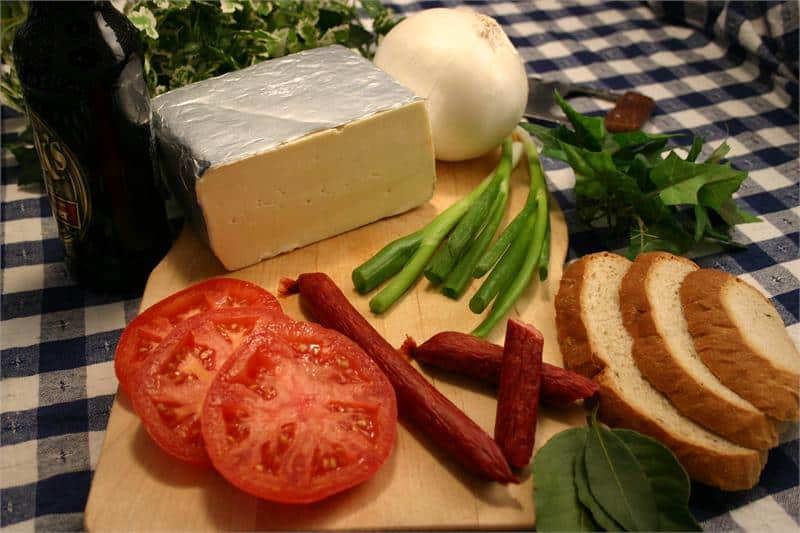
Beer Cheese is one of our Wisconsin Cheeses along with Brick, Muenster, Limburger and our American Cheeses. Our Beer Cheese is not to be mistaken for the popular Beer Cheese dips of Kentucky, it is a semi-soft combination of Limburger and Brick Cheese. The taste and smell are very strong and can be enjoyed with a nice cold glass of beer.
Chocolate Cheese

This cheese is one way to get the best of both worlds! Our Chocolate Cheese is made from a local recipe and all the ingredients are locally produced, combining fine chocolate fudge with premium cream cheese. This makes for a smooth, creamy balance of sweet chocolate and mild cheese!
These 5 kinds of cheeses are must try cheeses! Don’t hesitate, trust our family of cheese experts at Shisler’s Cheese House, and you won’t regret it!
Order your quality, affordable, delicious cheeses today at-https://cheesehouse.com/cheese.aspx
Should You Eat Moldy Cheese?
It’s always a shame when we discover our food has gone to waste because of mold. While mold is usually a sign that it’s time to discard something, it’s not as clear exactly what to do when it comes to cheese. Here is a guide which will help you differentiate which cheese is ‘good’ and which is ‘bad’ when mold takes place.
Image Source: static1.businessinsider.com/image/54cffb496bb3f7225d1b7747/we-definitively-solved-the-debate-over-whether-you-can-still-eat-cheese-with-mold-on-it.jpg
Now there are very clear types of cheeses that must be discarded when mold occurs- soft cheese like cream cheese, cottage cheese, and ricotta cheese. Also, cheese that is shredded, sliced or crumbled should be discarded when mold appears. With these kinds of cheeses, the mold can send threads all throughout the cheese. Harmful bacteria such as salmonella, e.coli, listeria, and brucella can also grow throughout the cheese. So stay clear of any consumption if these cheeses have mold.
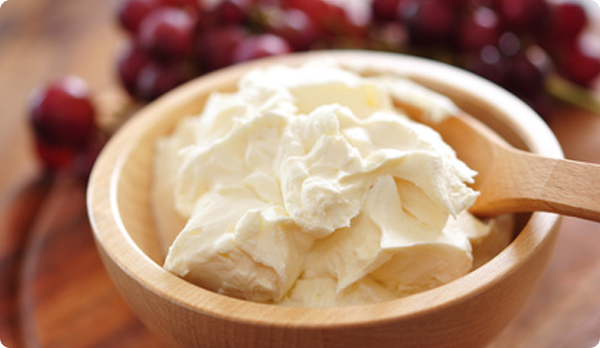
Image Source: newhealthadvisor.com/images/1HT00226/PART1.png
There is still hope for cheese with mold, though. Mold usually can’t penetrate far into hard and semisoft cheeses, like cheddar, parmesan, swiss and Colby. So it is easy to just cut the mold away from the cheese and eat the rest. It is safe practice to cut at least an inch around and below the mold to be safe, and do not contaminate the rest of the cheese by touching it with the knife.

Image Source: triggerwarning.co.uk/wp-content/uploads/2016/02/Cheese-board.jpg
It is true that not all molds pose a risk. Some types of mold are actually used to make cheeses, such as Camembert and Brie. These are safe molds to eat.
Whether or not you should eat the mold generally relies upon what type of cheese it is. It’s usually quite easy to differentiate between, but if you find yourself unsure, it is best to discard the cheese, just to be safe.



